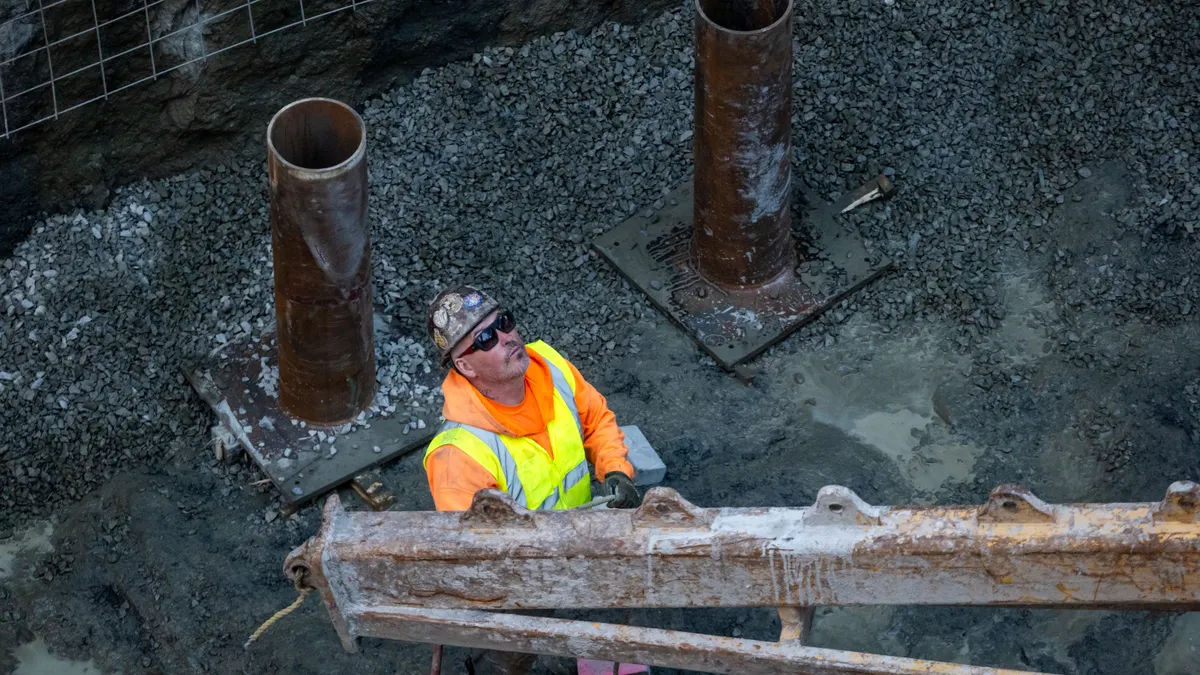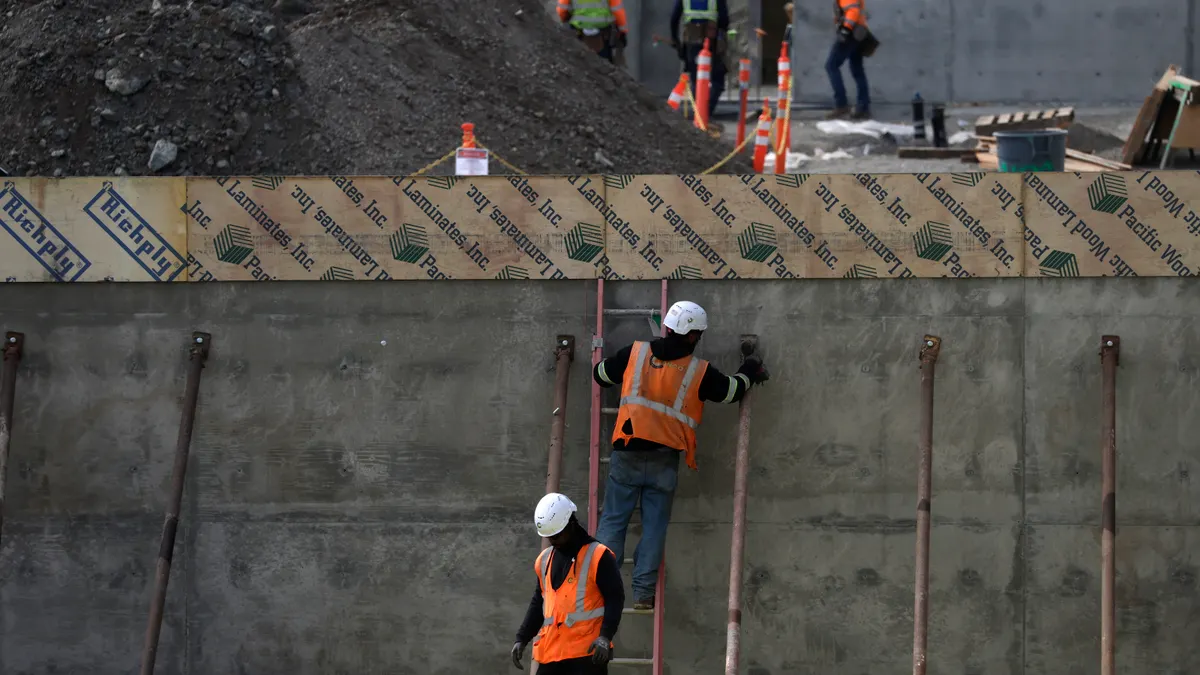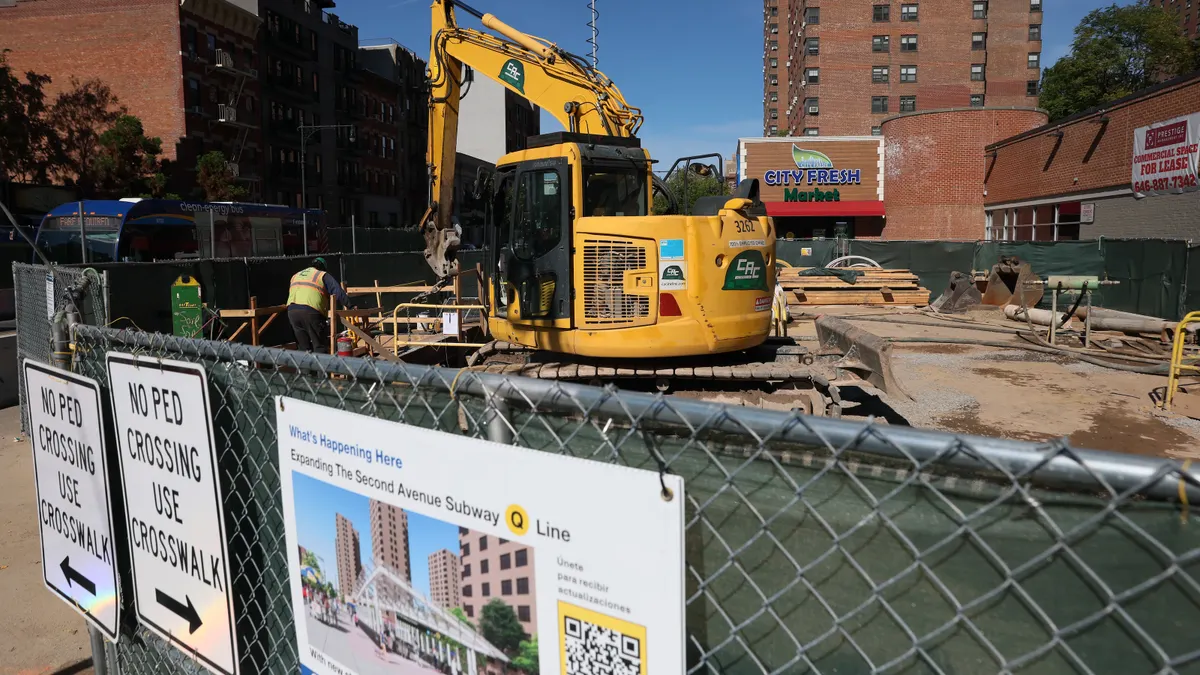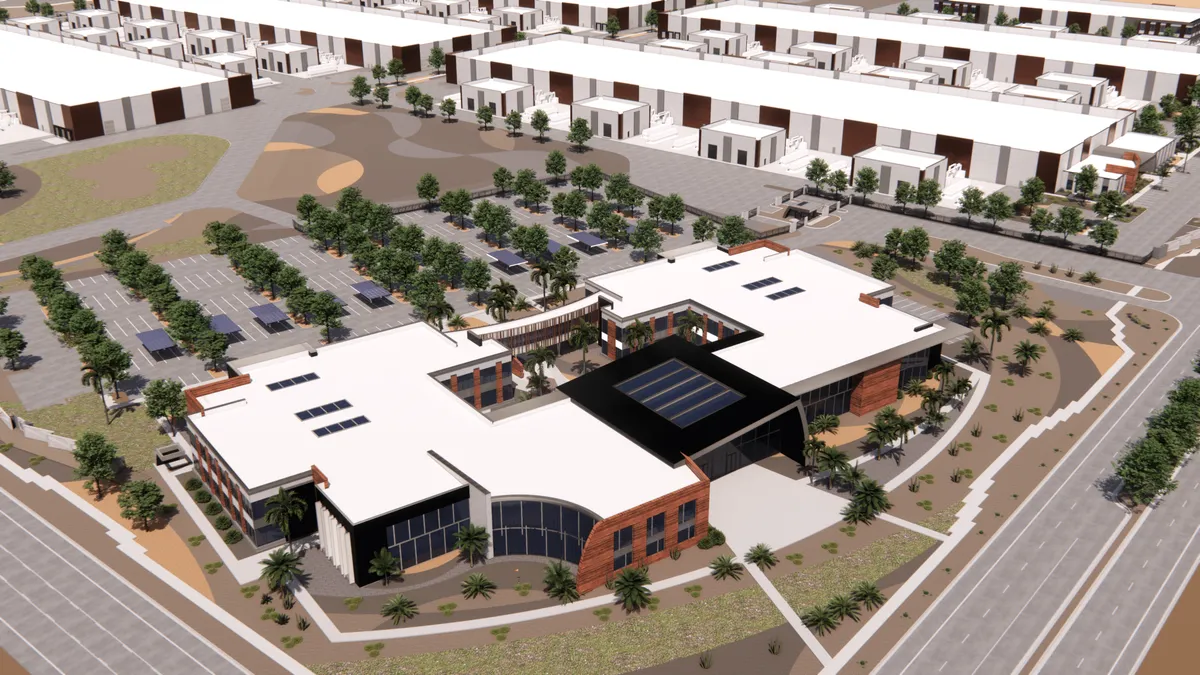If 2016 saw the pace of the homebuilding industry’s protracted recovery pick up slightly, 2017 could see a more concerted spring forward. That’s due to rising (but still low) mortgage rates, continual gains in new construction activity and a bevy of first-time buyers waiting for the price (and product) to be right for their shot at homeownership.
“The housing market is relatively tight right now and is expected to loosen somewhat in 2017,” Andres Carbacho-Burgos, a director at Moody’s Analytics, said. That loosening is imperative for affordability — a current weight on recovery.
Below, we explore how price growth, inventory conditions, buyer demographics and design trends will shape the 2017 spring and summer buying seasons.
Home price growth will ease this year
Home-price gains will continue into 2017 but should taper slightly as more inventory comes online and interest rates tick up.
“We expect house-price growth to be significant in the coming year — around 4% to 5% — but for 2018 and 2019 to be significantly lower because of high interest rates,” Carbacho-Burgos said.
Currently, the median U.S. family has around 170% of the income needed to qualify for a standard mortgage on a median priced home, Carbacho-Burgos said. That figure, while solid, is expected to drop to 160% by 2019 as rates increase from historical lows. The effect is likely to be reduced housing demand and slowing home-price growth.
In its 2017 Housing Forecast, Realtor.com set similar expectations, calling for home-price appreciation to decelerate from 4.9% in 2016 to 3.9% in 2017, with 46 of the 100-largest U.S. metros seeing depreciation of at least 1%. Metros with the most significant forecasted gains are predominately in the West and South regions, while the Midwest, Mid-Atlantic and New England should see milder increases.
Supply-side headwinds will extend project timelines
A tight labor supply, more regulations and increased lot costs in many markets are putting pressure on prices and delivery schedules. “Builders seem to have accepted that it now takes longer to build a home,” said Jody Kahn, senior vice president at John Burns Real Estate Consulting. That has builders cautious about building on presale, causing them to take homes well into construction — 60 days or less before they can close — before putting them up for sale, she said.
“In most markets, the resale inventory is low — below equilibrium and in some markets critically low,” Kahn said. “In some cases, this is preventing people from listing their homes because they’re worried they won’t be able to resell [it].” That should have builders optimistic for new construction demand.
While low resale inventory will drive buyers in the new-home market, Kahn said homebuilders know that supply can’t meet demand overnight. “It’s a slow process to ramp up, to open new communities, to get the homes built, [to see] growth in single-family permits,” she said.
Growth in new construction will likely spill over into the existing-home market, leading to an increase in the rate of listings. Would-be homeowners have been reluctant to sell, fearing they’ll be unable to find a trade-up property in time and at a price they can afford. “They want to wait until some combination of higher home prices and the better job market is in effect,” Carbacho-Burgos said, benefiting still from higher prices but not shut out of a new home.
“It’s a slow process to ramp up, to open new communities, to get the homes built, [to see] growth in single-family permits."

Jody Kahn
Senior vice president, John Burns Real Estate Consulting
Single-family housing starts fell by a modest 4.1% from October to November but were up 5.3% year over year at an annual rate of 863,000, compared to the plus-1 million annual single-family starts rates recorded before the housing crash. Single-family permits were up slightly (0.5%) from October and 5.9% from November 2015.
But headwinds like a stringent regulatory environment and a continuing labor shortage could blunt the impact of a surge in new construction activity. “There continue to be these bottlenecks, and that has been more pronounced now than it has been in history,” Kahn said. “Our outlook is that the real estate inventory is going to continue to remain pretty low and continue to drive some buyers into the new home market.”
Markets like those in Ohio and New Mexico, where construction activity is still at or near bottom, should see the largest percentage increases in new single-family construction over the next two to three years, according to Carbacho-Burgos. However, regions seeing the largest absolute increase in construction — particularly in the Sun Belt states — have characteristics like strong job growth spurring demand for new construction.
Danielle Hale, director of housing statistics at the National Association of Realtors, explained that tight inventory conditions persist in the West, while metros like Nashville, TN, and Denver continue to experience similar conditions, pushing prices up. She expects inventory to return to the market nationally in 2017, and with it slowing price appreciation — 4.2% for 2017, below 2016 expectations but still “on the slightly higher side of normal.”
Mortgage rate increases could keep millennials out of the market
Debt-burdened and rent poor, many millennials continue to stay out of the homebuying market. The steady home-price increases over the past few years and, more recently, interest rates increases, haven’t inspired confidence in their return. Still, builders know this price-sensitive group is ready and waiting when inventory conditions loosen and housing costs moderate.
“There is that sense that there’s a wave of buyer activity coming, and it’s a pretty big number of households,” Kahn said, referring to the pent-up demand among young, would-be homebuyers. “There’s this feeling that here’s a less-taped segment that’s going to be growing, and we need to get ourselves in the mainstream of that activity.”
Builders are increasingly focused on understanding, if not building specifically for, this group. In October, Meritage Homes unveiled its LiVE.NOW. homes category, which targets first-time buyers with homes featuring smaller footprints and energy-efficient amenities. Toll Brothers followed in December, announcing it would launch its T|Select line of homes in Houston in January 2017. The line will feature fewer options and upgrades than the company’s typical offerings. This follows the 2014 launch of D.R. Horton’s Express Homes, which eye the entry-level buyer, and aligns with the positioning of entry-level players like LGI Homes.
Experts hope an infusion of new construction at the lower end of the market will spur this group into action. “For new homes, the share [of the market] that’s below the benchmark rate of $300,000 is still around 50%, maybe a little below that. I would like to see it get closer to 55%,” Carbacho-Burgos said. Before the housing market crash, the share of new construction priced under the median was closer to 55%, but new-home prices have increased since then, hence the lower share and the reason why first-time buyers today typically don’t buy newly built homes.
A report last month from Trulia noted that starter home inventory posted its largest drop in three years during the fourth quarter, down 12.1% year-over-year, and that first-time buyers spent 1.9% more of their income on these homes than they did a year ago. The national median list price of a starter home, according to the real estate website, was $164,920 for the period, up 7.6% from the year-earlier period.
Still, putting a community on the fringe of an active market and paring down the product to lower its price-point doesn’t mean younger, first-time buyers will bite. “It’s very untested at this point,” said Devyn Bachman, a research analyst at John Burns Real Estate Consulting.
So what will get younger, first-time buyers in the market?
Slow but steady wage gains and overall economic recovery. “We’ve already seen strong job growth in 2016 and continued job growth in the last few months,” the NAR’s Hale said. “We think that will be a strong factor into 2017.”
Homes will get tighter and smarter
On the design side, trends for single-family construction and renovations include more efficient insulation, low-flow fixtures and appliances, LED lighting and generally tighter envelopes.
For multifamily, developers and owners are eyeing products that take energy consumption decisions out of occupants’ hands, such as sensors for lighting and programmable thermostats, according to Michelle Foster, vice president of innovation services at the Home Innovation Research Labs, an NAHB subsidiary that focuses on green product and systems research.
Solar, too, could make strides in 2017, she added, citing Tesla’s recent bid to revamp rooftop photovoltaics for residential applications. “It’s something that consumers generally like the idea of and want, [but] the price point has not been right and they still have an aesthetic hurdle,” she said.
Builders have been sensitive in adding additional line items to projects, she said, as recent increases in material and labor costs are already being passed on to buyers. That's been a limiting factor for new technology and products.
Homeowners are also asking for more and larger windows, accord to a recent survey of residential architecture firms, in response to building technology advances around energy efficiency. The survey also noted more demand for cool roof and fire-resistant exterior technology in 2016, which will likely increase in the new year.






















